Strenghtening of the AICM Structure
Project Status: Completed
Project Year: 2020
Use: Airport
Client: Federal Government
Area: 746 ha
Location: Mexico City
Construction: Taller A, MACYE
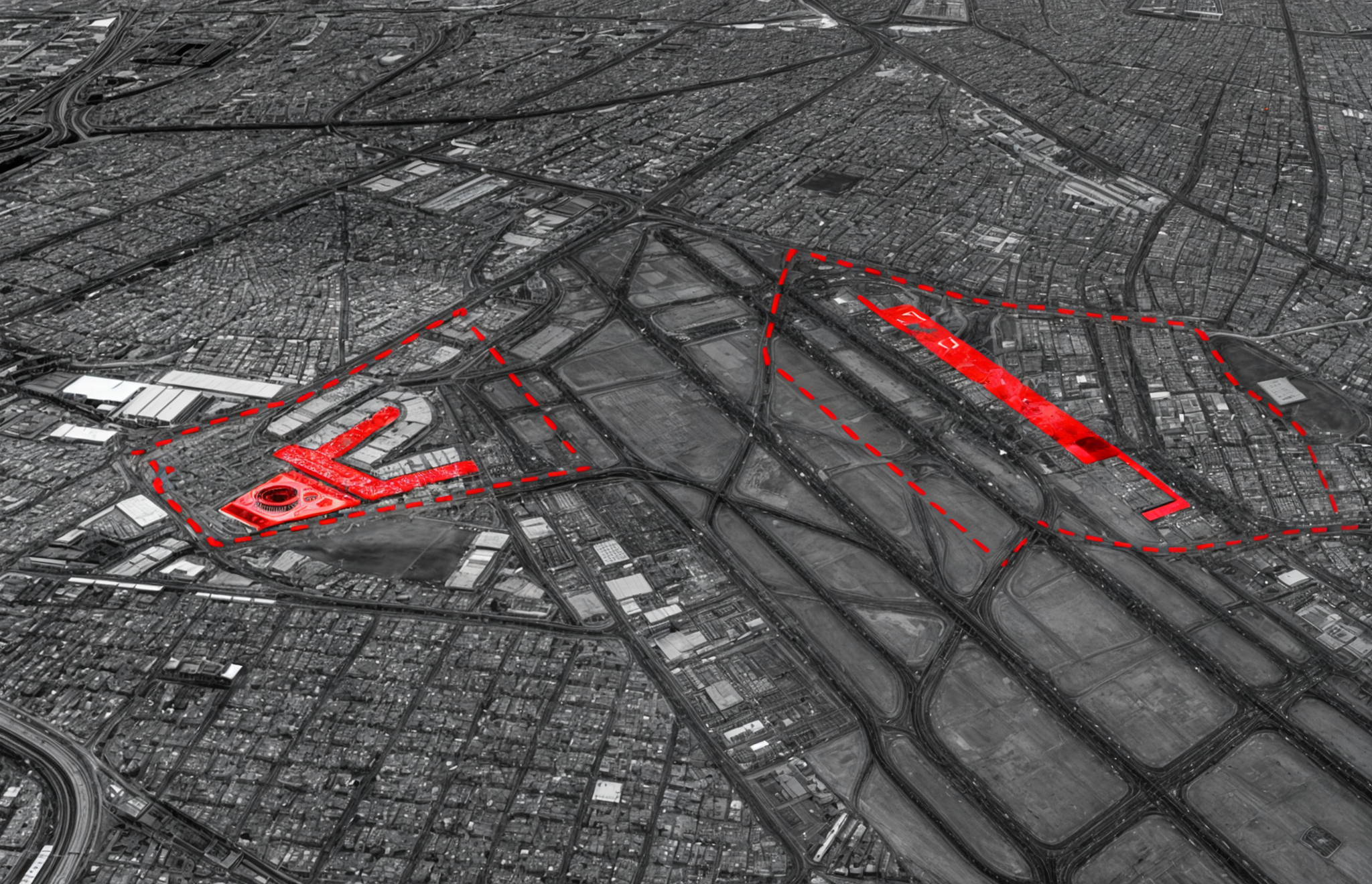
Context
The project addresses the critical need for restructuring and reinforcement of existing terminal buildings and their foundations at Mexico City International Airport (AICM), specifically focusing on Terminals 1 and 2. This intervention responds to the complex challenges facing aviation infrastructure in Mexico City, where geological conditions, seismic activity, and the cumulative effects of decades of operation create ongoing threats to structural integrity and safety. The airport's essential role in national and international transportation networks makes these facilities irreplaceable, demanding solutions that maintain operational continuity while addressing fundamental structural concerns that cannot be deferred without risking catastrophic failure or forced closure.
The project scope encompasses specialized geotechnical and structural works necessary to execute reinforcement, restructuring, recycling, or demolition interventions required for the long-term stability and durability of both terminals. This comprehensive approach acknowledges that different building elements and zones may require distinct strategies ranging from selective strengthening to complete removal and replacement. The work must comply with rigorous standards established in the Construction Regulation for the Federal District and its Complementary Technical Norms, along with other relevant regulations governing aviation facilities. These frameworks establish minimum specifications for structural performance, but the project context demands solutions that not only meet current codes but also address the specific vulnerabilities inherent to this site, including the notorious subsidence issues affecting much of Mexico City due to aquifer depletion and the seismic hazards characteristic of the region.
The investigative phase involved extensive topographic surveys conducted across all structures and facilities within both terminals, establishing baseline data essential for understanding building behavior and planning interventions. The verticality of buildings was assessed at each corner and at important intermediate points, documenting any deviation from true vertical that might indicate foundation settlement or structural distortion. Leveling procedures were systematically carried out to identify trends of differential subsidence affecting each structure, recognizing that uneven settlement poses greater structural threats than uniform movement. The topographic work extended beyond the terminal buildings themselves to encompass the surrounding terrain within a defined study area polygon stretching from Peñón de los Baños to the structures of Terminal 1 and the left side of Runway 5. This broader survey provides essential context for understanding how regional subsidence patterns affect the airport facilities and helps predict future settlement trends that must be accommodated in the reinforcement design.
A detailed post-seismic inspection of structural safety was conducted to assess the current condition of facilities following seismic events, providing crucial information about how the structures have responded to earthquake loading and identifying any damage or weakness that may compromise their continued use. This inspection, formally endorsed by the appropriate oversight bodies CSE and DRO, served the dual purpose of providing a preliminary opinion on the immediate habitability of the structures while gathering essential data for planning their long-term restructuring. The post-seismic assessment acknowledges that earthquake damage is not always immediately visible and that structures may sustain cumulative degradation from repeated seismic events that gradually erodes their capacity to withstand future loading.
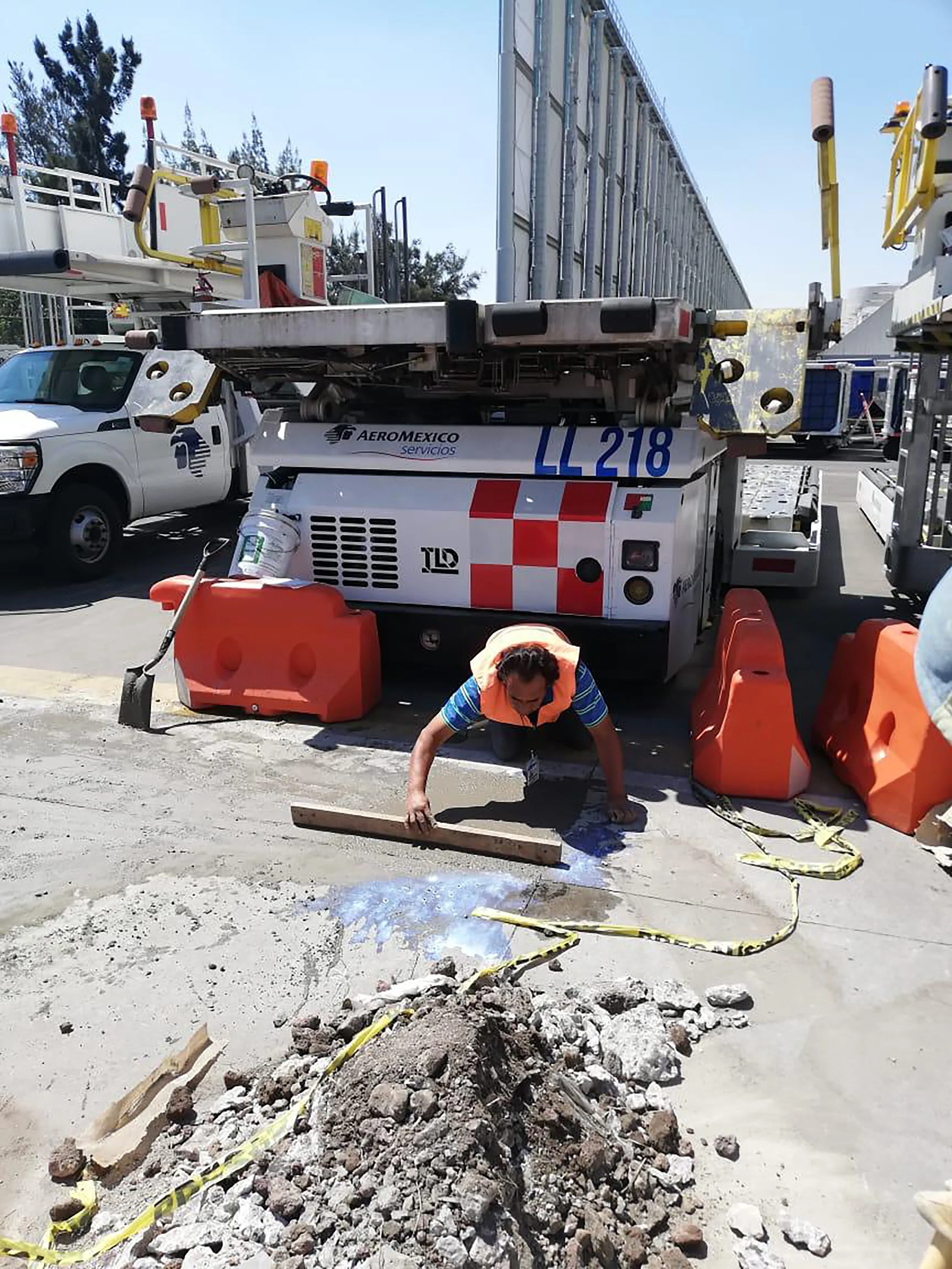
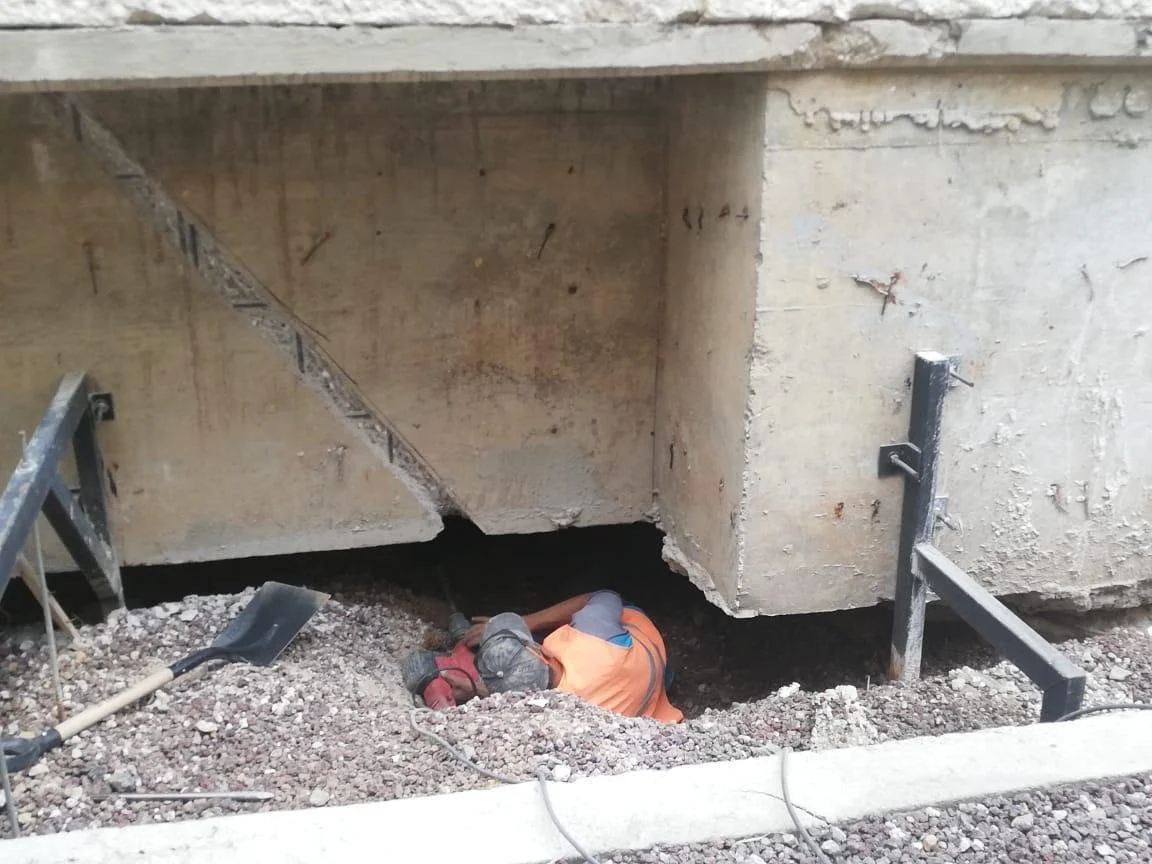
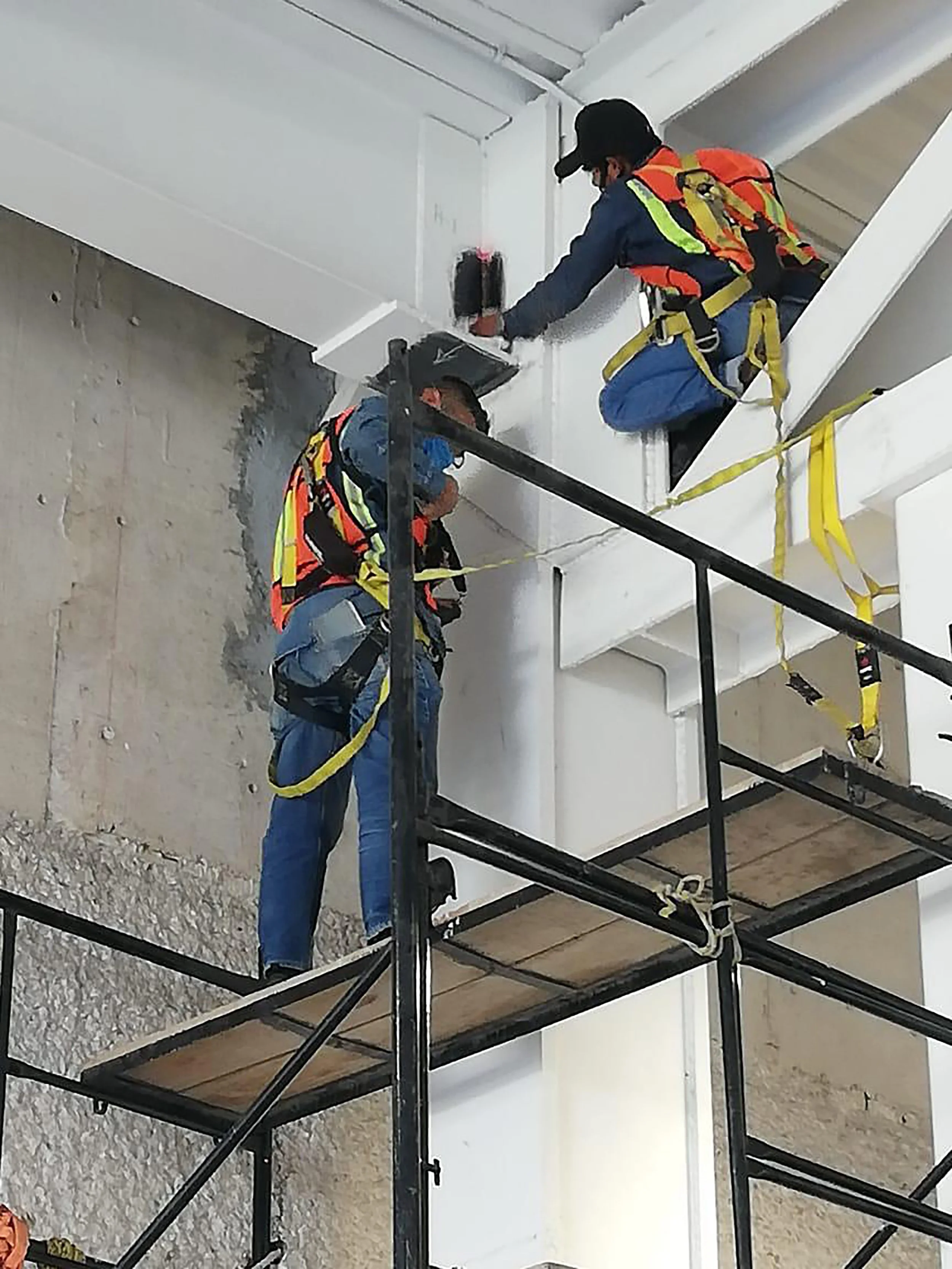
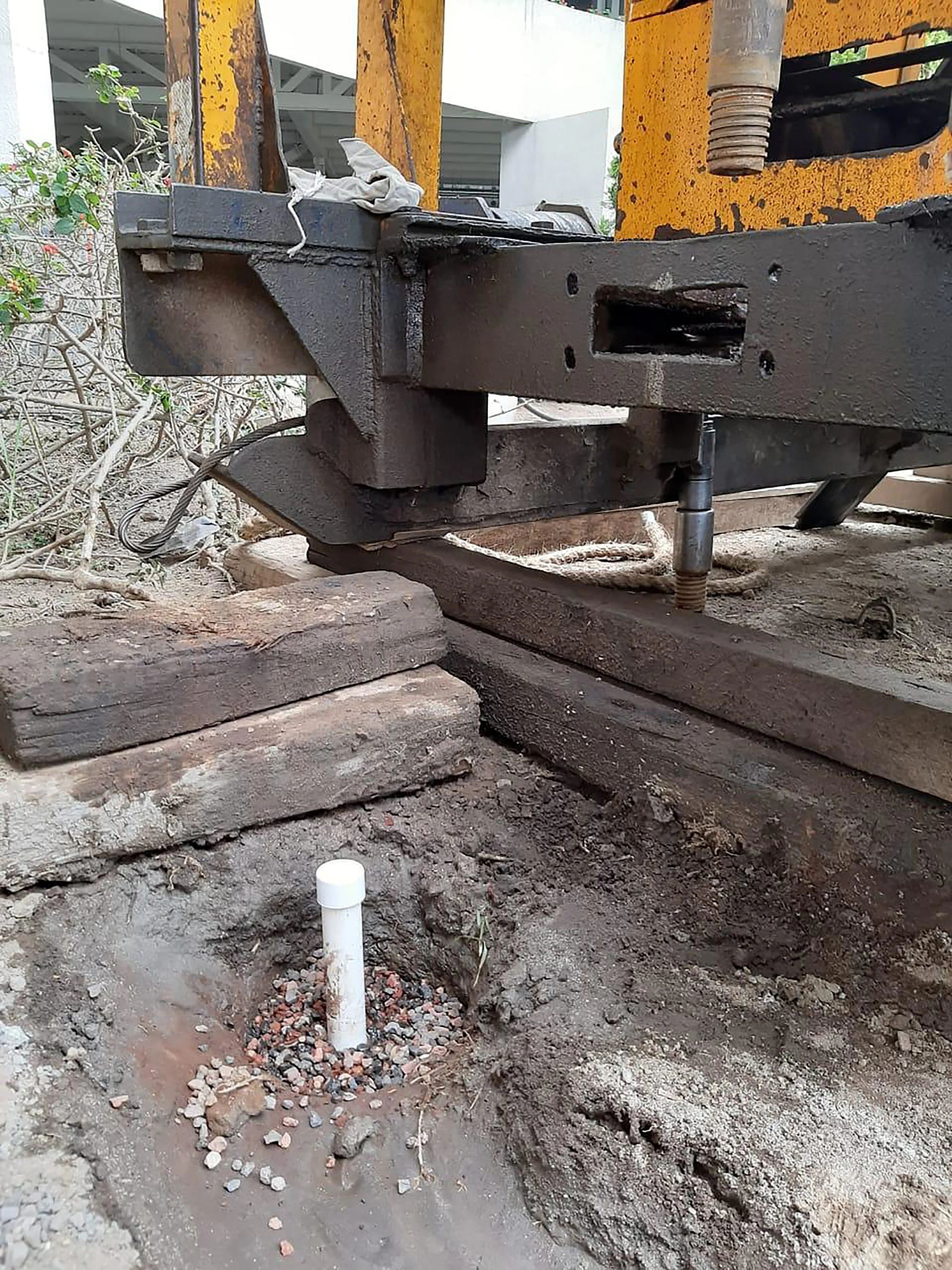
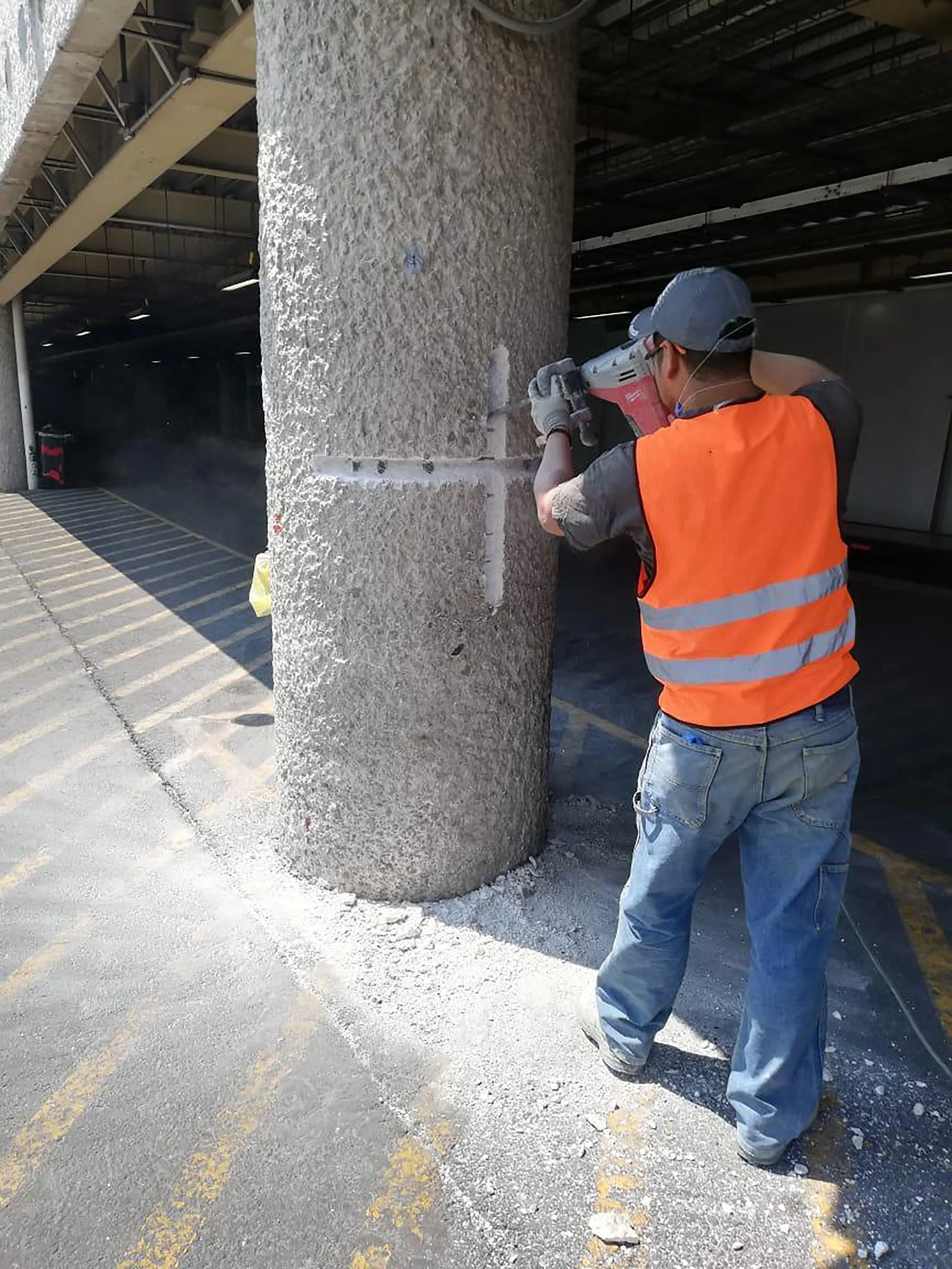
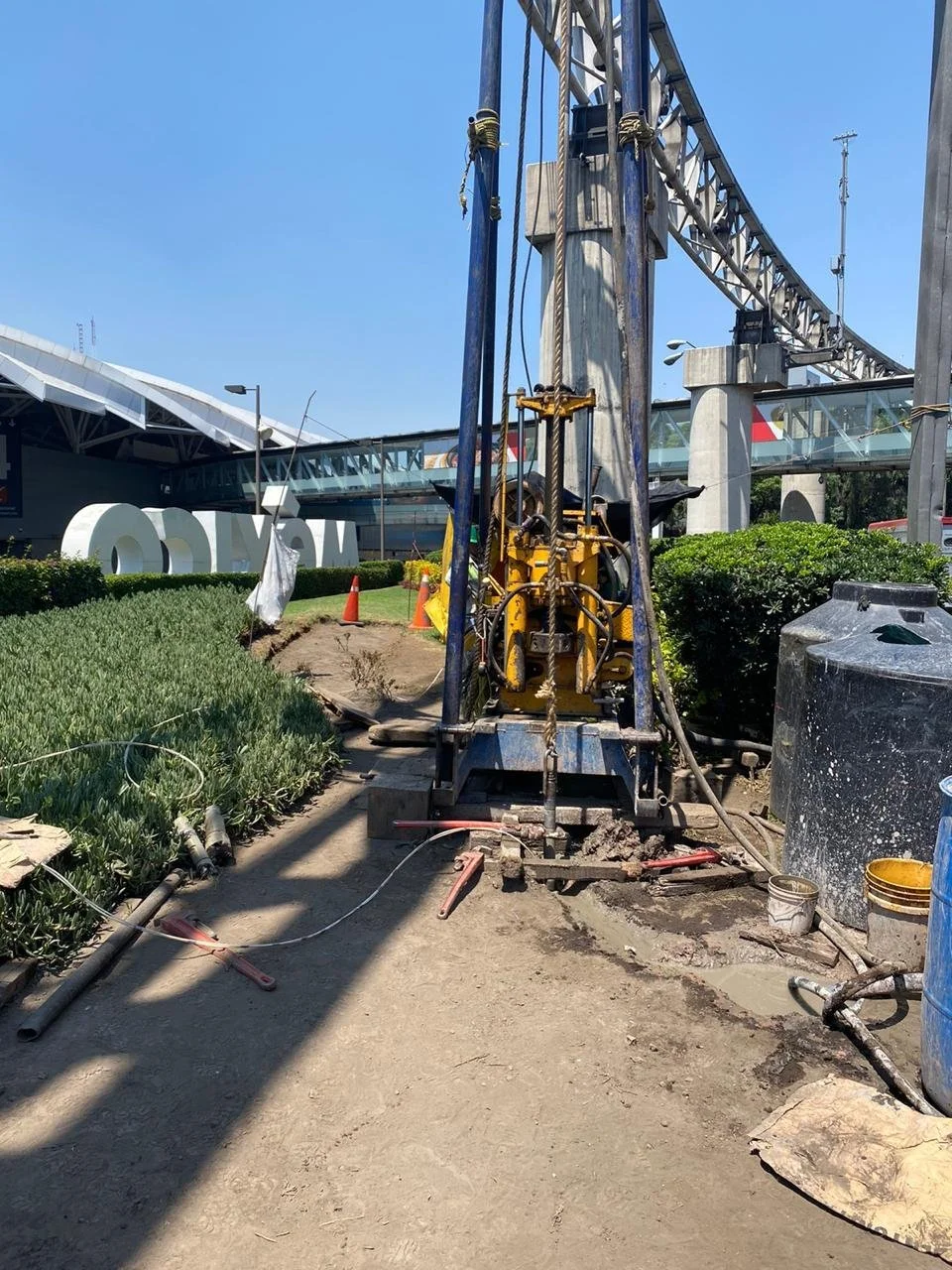
Design Principles
The project approach prioritizes ensuring proper structural behavior in both the short and long term, recognizing that aviation infrastructure must maintain reliability across decades of continuous operation with minimal tolerance for service interruptions. This dual temporal focus requires solutions that provide immediate safety improvements while establishing foundations for long-term durability. Short-term interventions address urgent vulnerabilities that pose immediate risks to occupants and operations, while long-term strategies tackle underlying conditions such as ongoing subsidence that will continue to affect the structures for the foreseeable future. This bifocal perspective prevents the false economy of temporary fixes that defer rather than resolve fundamental problems.
The strategy embraces multiple intervention types—reinforcement, restructuring, recycling, and demolition—acknowledging that a single approach cannot address the varied conditions present across the extensive terminal complexes. Reinforcement adds strength to existing structural elements that remain fundamentally sound but require enhancement to meet current standards or accommodate changed loading conditions. Restructuring involves more substantial modifications to structural systems, potentially including load path alterations or the addition of entirely new structural elements. Recycling refers to the adaptive reuse of building components or materials, minimizing waste while preserving serviceable elements. Demolition becomes necessary where structures are too compromised to repair economically or safely, or where their configuration fundamentally conflicts with operational requirements. The willingness to employ this full range of interventions demonstrates a pragmatic approach that selects the most appropriate strategy for each specific condition rather than forcing a uniform solution across diverse situations.
Comprehensive documentation and assessment form the foundation for all intervention decisions, with extensive topographic surveys and structural inspections providing the empirical data necessary for engineering analysis. The detailed mapping of verticality deviations and differential subsidence creates a quantitative baseline against which future monitoring can measure ongoing movement, enabling predictive maintenance strategies that intervene before conditions become critical. The post-seismic inspection methodology recognizes that structural assessment must respond to the specific hazards present at this location, where earthquake loading represents a primary threat that has already tested the structures and will inevitably do so again. By systematically documenting current conditions and understanding behavioral trends, the project establishes an evidence-based framework for decision-making that grounds interventions in observed reality rather than generic assumptions.
Regulatory compliance establishes the minimum acceptable performance threshold, but the project recognizes that aviation infrastructure serving a major metropolitan area must exceed minimum standards to provide appropriate margins of safety given the consequences of failure. The Construction Regulation for the Federal District and its Complementary Technical Norms provide the baseline requirements, but the design process must also consider airport-specific operational demands, the need to maintain continuous service during phased construction, and the imperative to create solutions robust enough to accommodate the uncertainties inherent in predicting future subsidence and seismic activity. This approach transforms compliance from a checkbox exercise into a genuine performance commitment, creating infrastructure designed not merely to pass code review but to provide reliable, safe service under the challenging conditions that define this site for decades to come.The project scope encompasses specialized geotechnical and structural works necessary to execute reinforcement, restructuring, recycling, or demolition interventions required for the long-term stability and durability of both terminals. This comprehensive approach acknowledges that different building elements and zones may require distinct strategies ranging from selective strengthening to complete removal and replacement. The work must comply with rigorous standards established in the Construction Regulation for the Federal District and its Complementary Technical Norms, along with other relevant regulations governing aviation facilities. These frameworks establish minimum specifications for structural performance, but the project context demands solutions that not only meet current codes but also address the specific vulnerabilities inherent to this site, including the notorious subsidence issues affecting much of Mexico City due to aquifer depletion and the seismic hazards characteristic of the region.
